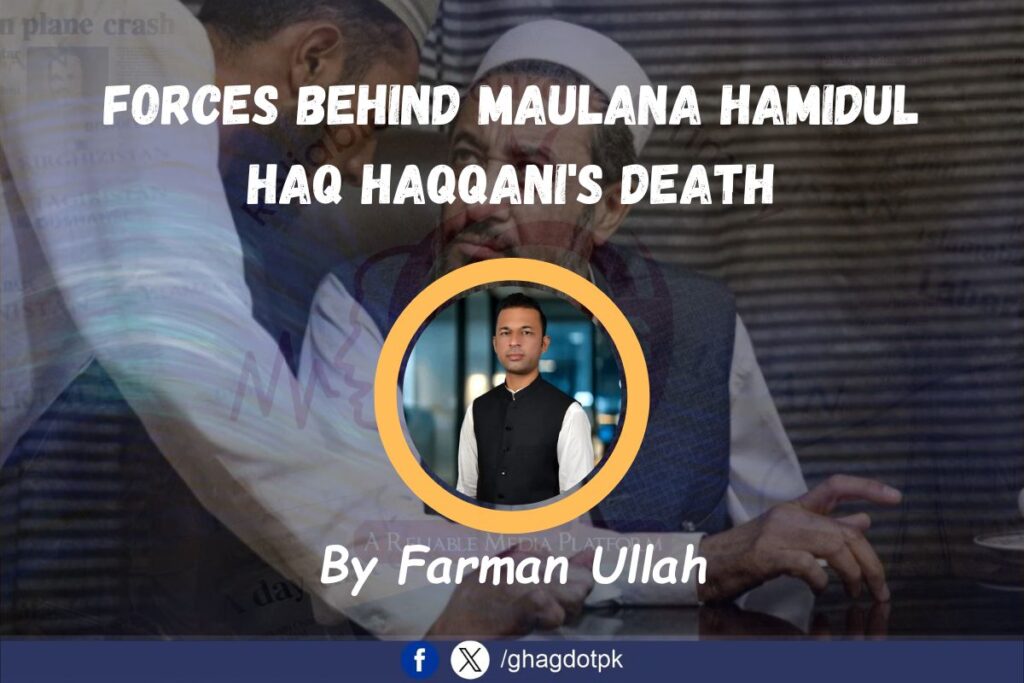By Farman Ullah
The bombing of Darul Uloom Haqqania, a prominent religious school in Nowshera district, on Friday represents a significant shift in the recent pattern of militant attacks. Traditionally, militants have focused their violence on security personnel, law enforcement officials, and government workers. However, this attack targeted a religious institution, causing the deaths of several people, including Maulana Hamidul Haq Haqqani, the head of the seminary. He was also a prominent religious leader and the son of Maulana Samiul Haq, who was widely known as the “Father of the Taliban.” Maulana Samiul Haq had a major influence on the rise of the Taliban, as many senior members of the group had studied at his seminary.
The bombing was a suicide attack, according to police reports, and it appears that Maulana Hamidul Haq Haqqani was the primary target. However, at the time of the attack, no group had officially claimed responsibility. Despite this, some analysts and observers have suggested that the Islamic State (IS) could be behind the attack. An Afghan interior ministry official condemned the bombing and blamed “enemies of religion,” a phrase many believe refers to IS. The Afghan Taliban, which also holds a significant position in the region, has hinted that the IS-Khorasan branch (IS-K), which operates in both Afghanistan and Pakistan, could be involved in the attack. These militants have criticized the Haqqani seminary in the past due to its ties with the Afghan Taliban, and they are known to be hostile to those who support political involvement alongside religious activities.
The suspicion that IS-K may be responsible for the bombing is further supported by the group’s known opposition to clerics who engage in politics or endorse democracy. Both Maulana Samiul Haq and his son, Maulana Hamidul Haq Haqqani, were not only religious leaders but also politically active figures, and they were known for their involvement in Pakistan’s political landscape. For groups like IS, which adhere to a strict, medieval interpretation of Islam and oppose democratic systems, such figures represent a major target. This ideological difference between the Haqqanis and IS-K may have made them particularly vulnerable to attack.
If the bombing is confirmed to be the work of IS-K, it would highlight a new security challenge for Pakistan. In recent years, Khyber Pakhtunkhwa and parts of Balochistan have already seen a surge in terrorist activities, with groups like the Tehrik-i-Taliban Pakistan (TTP) and other affiliated factions responsible for numerous attacks. IS-K, however, is considered even more dangerous because of its global ambitions and its strict sectarian views. This attack could signal that IS-K is attempting to expand its influence in Pakistan, potentially making the situation more complex and dangerous for the country.
Moreover, the fact that the Haqqani family had close ties with the Afghan Taliban could also have played a role in the attack. IS-K is known to be in conflict with the Taliban, and the Haqqanis’ prominent role in the Taliban’s religious and political affairs may have made them targets for rival militants. Whether this attack was orchestrated by IS-K or another group with ties to the Taliban’s enemies, it reflects the ongoing instability in the region.
A full and thorough investigation is needed to determine the true perpetrators behind the bombing. However, one thing is clear: if IS-K was indeed behind the attack, it should raise serious concerns in both Pakistan and Afghanistan about the growing influence of this terrorist organization. IS-K has already demonstrated its willingness to attack high-profile targets in the region, and its brutal, sectarian tactics pose a significant threat to regional security.
This attack, though tragic, also presents an opportunity for greater cooperation between Pakistan and Afghanistan. Both countries are facing a common threat in the form of IS-K, and by working together, they may be able to better combat the growing danger posed by this extremist group. This tragedy could serve as a catalyst for enhanced collaboration between the two nations, as they confront an increasingly complex and deadly threat in their shared border region.
The bombing of Darul Uloom Haqqania in Nowshera not only marks a departure from previous patterns of militant violence but also highlights the growing threat of IS-K in the region. The attack targeted a prominent religious leader with significant political influence, and while no group has claimed responsibility, suspicions point to IS-K. If confirmed, this would signal a new and dangerous chapter in the ongoing security challenges facing Pakistan and Afghanistan. It also underscores the need for stronger cooperation between the two countries to tackle the shared threat of violent extremism.






